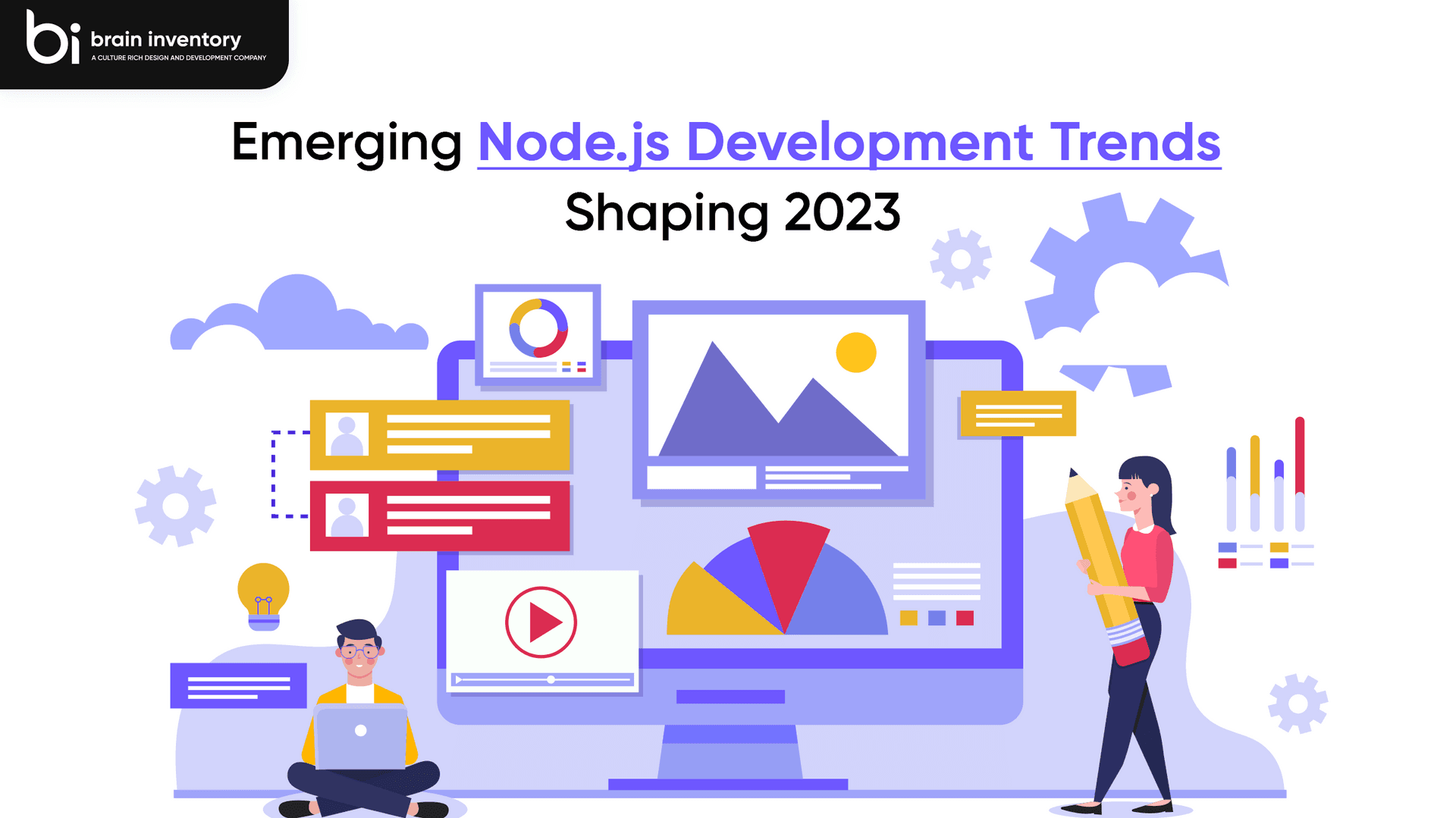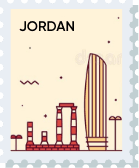Emerging Node.js Development Trends Shaping 2023

Quick Summary: Today, we’ll learn about Node.js and look into some of the top Node.js development trends in 2023 and some interesting statistics that help point us toward the future. By the time you finish reading this post, you’ll be familiar with one of the most popular programming frameworks available today, the top things to consider when moving from Node.js to another framework or vice versa, and many cool facts about Node. js—along with pertinent statistics courtesy of Google Trends and the TIOBE Programming Community index.
About Node.Js
Node.js is a powerful open-source JavaScript runtime built on Chrome’s V8 JavaScript engine. It allows developers to build scalable and high-performance network applications. Node.js revolutionized server-side development by enabling JavaScript to run on the server, bridging the gap between frontend and backend development. It has gained immense popularity due to its event-driven, non-blocking I/O model, which makes it highly efficient and ideal for real-time applications, microservices, and APIs. Node.js boasts a vast ecosystem of modules and libraries, making it a go-to choice for developers looking to build robust and scalable applications. Its lightweight nature, ability to handle concurrent requests, and support for asynchronous programming make it a preferred technology for high-performance applications. Node.js continues to evolve, with frequent updates, new features, and improvements, ensuring its relevance and adoption in the rapidly changing world of web development.
Why Staying Updated with Node.js Development Trends is Crucial
Node.js is a popular JavaScript framework that helps build fast and scalable network applications. According to the results of a survey conducted by StackOverflow, around 47% of professional developers use it for web applications. It powers some popular high-profile websites such as eBay, Uber, Netflix, PayPal, and LinkedIn, and allows you to create complex single-page applications.
Reasons for following Node.js development trends in 2023
- Stay ahead of the competition
- Improve user experience
- Boost productivity
- Support future applications
Top Node.js Development Trends to Watch Out for
Real-time applications – Real-time application (RTA) is an interactive service, which can be used for a variety of tasks. Due to its real-time data processing, these applications differ from traditional ones. To offer more engaging and personalized content and features, RTA has become more relevant in recent years.
Node.js is an open-source, cross-platform runtime environment for server-side and networking applications. It’s a great fit for real-time data apps that need to be fast, lightweight, and scalable.
Serverless Architecture Development – With the rise of software-as-a-service (SaaS) applications, developers have a new way to build applications that can be easily scaled. Serverless architecture is an architectural pattern that represents a new way of creating single-purpose application components (functions) that are connected via an event-driven API.
Serverless architecture has been in the developer space for quite some time now. Serverless concepts used to be limited to big enterprises or huge development teams. However, with the latest offerings from Amazon Web Services (AWS), Google Cloud Platform (GCP), and Microsoft Azure, organizations of all sizes can enjoy the benefits of serverless architecture without being forced to hire a dedicated team or spending a lot of money.
Microservices – Microservices is an architecture style that is highly recommended for most kinds of applications that require greater flexibility and scalability. Microservices are flexible because they each run their own processes, but they can still be written in a single language. This makes it easier for a microservices architecture to scale horizontally, using multiple instances of each microservice, to meet the changing demands of your application.
The microservice architectural style has been gathering momentum in recent years, owing to its potential to deliver software and services faster. The microservice architecture encourages the use of small services. These services are built around business capabilities and can be developed using technologies such as Node.js.
GraphQL Integration: GraphQL was created by Facebook in 2012 and was released to the public in 2015. There are several benefits to using GraphQL such as improved client-server performance, a single endpoint for data queries, a simple and easy-to-understand query language, and support for multiple types of clients with specific functional requirements. GraphQL is supported by several well-known technologies including Facebook, Twitter, Github, Shopify, Yelp, WhatsApp, and more. It is currently on GitHub’s trending list and shows no signs of slowing down.
GraphQL, also known as Graph Query Language, is one of the newest buzzwords in web development. Although it is only in its early stages of development, this technology has already gained popularity among developers due to its ability to simultaneously handle large amounts of data from multiple sources. This allows developers to build Node.js applications faster than ever before.
MEAN & MERN Stack: The four fundamental components of the MEAN stack, MongoDB, Express.js, AngularJS (an MVC framework), and Node.Js allow developers to build complete web applications in a faster way as compared to other methods. The MEAN Stack is a powerful combination of modern tools that can be used to develop scalable web applications.
With the growing popularity of Node.JS, Express, MongoDB, and React, MERN has become the new kid on the block when it comes to picking a stack for building applications. However, these aren’t just regular developer tools. In fact, they are some of the most powerful tools available that can be combined to make sure your apps run at optimal performance.
With the popularity of MEAN and MERN stacks on the rise, Node.js is becoming an irreplaceable part of them. That’s because it’s typically a key component of both platforms.
Internet of Things (IoT): An internet-connected device is only as powerful as the server that is hosting it. Node.js is a server-side programming language that provides a non-blocking, event-driven architecture to develop applications and websites. Through clustering, Node.js can handle multiple high-concurrency connections making it an ideal fit for building IoT devices and applications.
Node.js has gained a lot of popularity over the past few years and for good reason. Node is incredibly easy to use, and it’s perfect for the Internet of Things (IoT). You don’t have to worry about maintaining servers or installing database software — just write your JavaScript code. A node can also handle thousands of connections quickly and easily, which makes it ideal for IoT applications.
Cloud Computing: Cloud computing is Internet-based computer technology — also known as web-based computing — that allows users to access a shared pool of configurable computing resources, including networks, servers, storage, applications, and services. In the past decade, cloud computing has evolved from a fast-growing trend in the software industry into an essential component of IT.
As NodeJS continues to gain popularity, more and more businesses are seeing the benefits of using NodeJS for their projects. Whether it’s a mobile, desktop, or web application, NodeJS can seamlessly integrate with other frameworks and technologies to offer solutions that cover the whole gamut of tasks.
DevOps: It’s the relationships that are fundamental to DevOps; improved communication and collaboration, in which DevOps professionals are encouraged to engage actively and establish shared goals. The relationship between developers and IT operations professionals is a particularly important aspect of this culture.
Node.js has gained a lot of popularity in the past few years and its growth hasn’t slowed down at all. The Node.js framework is a good fit for DevOps because it can be used for creating scalable and cloud-based applications, It can also be used for enhancing applications’ performance and efficiency.
Conclusion
Next-generation frameworks such as Node.js have gained a lot of traction since they emerged on the market and for a good reason. It’s safe to say that Node.js has garnered enough critical mass to become a viable solution for a variety of businesses in different fields. From web applications to e-commerce software, Node.js is an excellent bet to help your company stay ahead of the curve and generate real value for your business.
At Brain Inventory, we have a team of expert Node JS developers with years of experience building scalable and highly available web applications using different frameworks and technologies. Our top Node js development company comes with vast experience in developing complex web applications using this technology stack.

Have an idea?
Get in touch, we’d be
happy to hear from you
We are always looking out for new collaborations, whether you are a client who is passionate about a project or a talent who is interested in joining our team, our doors are always open.
locate us

India (HQ)
618, Shekhar Central, Palasia Square, A.B Road, Indore, Madhya Pradesh, 452001
+918109561401

United Kingdom
Brain Inventory, SBVS, 8 Roundhay Road, Leeds, UK, LS7 1AB
+18008209286

Canada
44 Main Street East Milton, ONCanada L9T 1N3
+4166696505

Jordan
185 Wasfi Al-Tal Street, Ammon Oasis Complex P.O Box 4724 Amman 11953 Jordan
+960770781000

USA
720 Seneca St Ste 107 Seattle, USA 98101
+1(206)6533419
if it's digital,we'll make it.
- Numetric - Online Accounting Software similar to QuickBooks
- Bloomia - Kegel exercise
- Virifi - Blockchain Powered Document Certification & Signing Platform
- Revolution Travel CRM - Custom CRM Built for Travel Agents
- Fatoura - Online Invoicing Platform
- My Fit Mantra - Your health partner
- Ocureel - Relation Building and video sharing Application